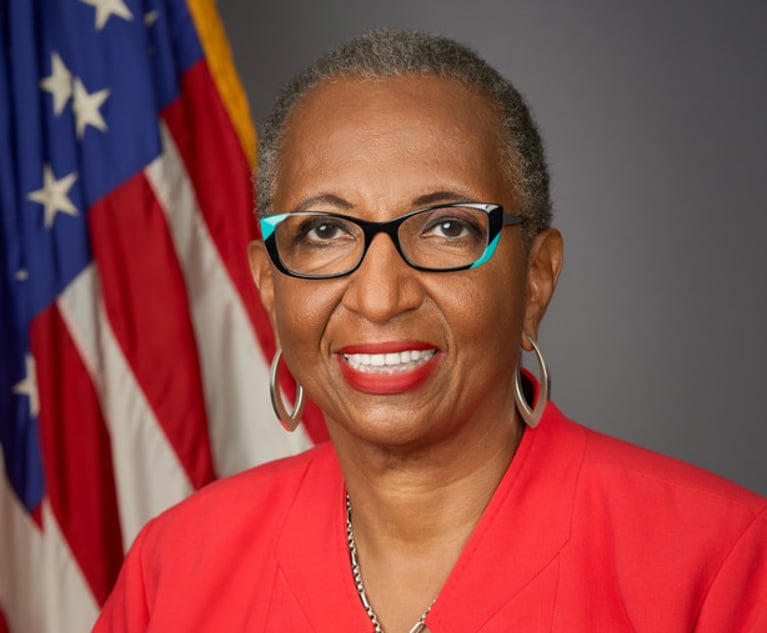Repairing CAIR
Court reinstates a Bush-era air quality rule that it previously found to be fatally flawed.
February 28, 2009 at 07:00 PM
6 minute read
Environmentalists often accused the Bush Administration of undermining environmental regulations. But in the area of air pollution, one administration cleanup attempt was stymied by the courts.
The Clean Air Interstate Rule (CAIR) of 2005, established under the Clean Air Act, created a regional cap and trade program in 28 eastern states and the District of Columbia. It was aimed at reducing smog-forming and soot-producing sulfur dioxide (SO2) and nitrogen oxide (NOX) emissions from coal-fired electric plants, with the intention of cutting pollution around the plants and in downwind states, where the emissions led to ozone and fine particulate matter pollution.
But in July 2008, the D.C. Circuit concluded in North Carolina v. EPA that the rule's parameters exceeded the jurisdiction of the Environmental Protection Agency (EPA). Although people guessed the rule would need an overhaul, virtually no one expected the court to vacate the rule in its entirety–but it did.
“The decision was so sweeping that it surprised everyone because no one had asked the court to do such a thing,” says Kyle Danish, a member at Van Ness Feldman.
The EPA petitioned for reconsideration. In late December 2008, the court reversed itself and allowed the rule to remain in effect while the EPA sought to fix it.
Intertwined Regulations
State regulators, environmentalists, utilities and the EPA itself had been dumbfounded by the 2007 appeals court decision.
“The decision went off in a direction that none of the parties had briefed and affected their interests in a way that most of them had not expected,” says Jeff Gracer, a partner at Sive, Paget & Riesel. “There was an element of having thrown out the baby with the bathwater.”
So the court's latest decision was a relief to parties on both sides of the regulatory fence.
“To be sure, everyone went at this from a different angle,” says Radha Curpen, a partner at Osler Hoskin & Harcourt. “Industry and the environmentalists, for example, had different issues with the rule, but in the end, the prospect of having no regulation at all was the greater evil.”
As for the EPA, vacating CAIR raised a host of problems with related regulatory schemes.
“EPA has designed a number of other air quality programs so that compliance with CAIR constitutes compliance with the other programs,” Danish says.
For example, EPA rules for fine particulate matter and ozone air quality standards allow states to use CAIR to meet the agency's “Reasonably Available Control Technology” requirements. And the EPA's Regional Haze Rule references CAIR for determining the “Best Available Retrofit Technology.”
For their part, states were counting on CAIR reductions to help them achieve the ozone and fine particulate matter standards by 2010. And power companies such as Duke Energy Corp. made substantial investments in emission allowances and technologies to prepare for compliance deadlines, the first of which came at the beginning of 2009.
“If CAIR disappeared, some utility companies would have to write off an enormous figure in investments,” Danish says.
Lingering Uncertainties
To be sure, not everyone is happy with the court's resurrection of the rule.
“Our firm represented two parties in this litigation who supported vacating the rule, and they are most unhappy that they will have to comply with a regime that is legally flawed,” Danish says.
Although the court set no deadline for the EPA to repair CAIR, it cautioned that the reversal was not an “indefinite stay” of the original ruling.
“The difficulty is that lifting the mandate doesn't address a lot of the legal uncertainty that exists,” Gracer says. “It's not at all clear that the EPA will be able to revisit CAIR in a way that is consistent with the decision on the merits.”
Indeed, in its initial ruling the court found sweeping flaws in the rule. Among other things, the EPA failed to explain how the cap and trade system would achieve CAIR's objectives; it may have omitted upwind states that should have been subject to the rule; it imposed a compliance deadline that didn't give the downwind states enough time to achieve the relevant air quality standards; and it lacked authority to intermingle the cap and trade allowances designed to address acid rain with the new regime.
It reasoned that CAIR was “one, integral action” subject to “several fatal flaws” of such scope that “very little” would survive a remand in anything approaching recognizable form.
“No amount of tinkering with the rule or revising the explanations will transform the CAIR, as written, into an acceptable rule,” the court stated in its July ruling.
There's nothing in the latest decision that countermands this reasoning. Rather, the court accepted the parties' new argument that the rule “has become so intertwined with the regulatory scheme that its vacatur would sacrifice clear benefits to public health and the environment while EPA fixes the rule.”
Which leaves open the question: If the flaws are so sweeping, how is the EPA going to fix it? And what should parties do in the meantime?
Ticking Clock
There appears to be little choice.
“Regulated companies will have to comply with CAIR until the agency responds,” Curpen says.
That's already begun. Under CAIR, the upwind jurisdictions began to reduce the levels of smog-forming NOX as of Jan. 1, 2009. And SO2 reduction must begin a year later.
In the long term, however, the EPA could respond in a number of ways. Its options include implementing a new strategy, letting the states sort it out through a series of petitions for reconsideration under Section 126 of the Clean Air Act or lobbying for new legislation that will provide it with the authority to implement CAIR.
But it's not at all clear that the EPA will be the moving force in the ultimate shape of a new rule. Environmentalists are already on record as touting the reinstatement of CAIR as a springboard for more stringent controls to be drafted by the Obama administration. They're pushing for a more comprehensive revision to the Clean Air Act that would embrace a broader range of environmental issues, including climate change.
Meanwhile, the clock is ticking. Late in 2008, the EPA reported that the number of geographic areas falling short of federal fine-particle pollution standards had nearly doubled to 58, including 211 counties in 25 states.
This content has been archived. It is available through our partners, LexisNexis® and Bloomberg Law.
To view this content, please continue to their sites.
Not a Lexis Subscriber?
Subscribe Now
Not a Bloomberg Law Subscriber?
Subscribe Now
NOT FOR REPRINT
© 2025 ALM Global, LLC, All Rights Reserved. Request academic re-use from www.copyright.com. All other uses, submit a request to [email protected]. For more information visit Asset & Logo Licensing.
You Might Like
View All
Compliance With EU AI Act Lags Behind as First Provisions Take Effect

State AG Hammers Homebuilder That Put $2,000-Per-Day Non-Disparagement Penalty in Buyer Contracts
3 minute read
Fired NLRB Member Seeks Reinstatement, Challenges President's Removal Power

GOP-Led SEC Tightens Control Over Enforcement Investigations, Lawyers Say
Trending Stories
- 1CFPB Labor Union Files Twin Lawsuits Seeking to Prevent Agency's Closure
- 2Crypto Crime Down, Hacks Up: Lawyers Warned of 2025 Security Shake-Up
- 3Atlanta Calling: National Law Firms Flock to a ‘Hotbed for Talented Lawyers’
- 4Privacy Suit Targets Education Department Over Disclosure of Student Financial Data to DOGE
- 5Colwell Law Group Founder Has Died in Skiing Accident
Who Got The Work
J. Brugh Lower of Gibbons has entered an appearance for industrial equipment supplier Devco Corporation in a pending trademark infringement lawsuit. The suit, accusing the defendant of selling knock-off Graco products, was filed Dec. 18 in New Jersey District Court by Rivkin Radler on behalf of Graco Inc. and Graco Minnesota. The case, assigned to U.S. District Judge Zahid N. Quraishi, is 3:24-cv-11294, Graco Inc. et al v. Devco Corporation.
Who Got The Work
Rebecca Maller-Stein and Kent A. Yalowitz of Arnold & Porter Kaye Scholer have entered their appearances for Hanaco Venture Capital and its executives, Lior Prosor and David Frankel, in a pending securities lawsuit. The action, filed on Dec. 24 in New York Southern District Court by Zell, Aron & Co. on behalf of Goldeneye Advisors, accuses the defendants of negligently and fraudulently managing the plaintiff's $1 million investment. The case, assigned to U.S. District Judge Vernon S. Broderick, is 1:24-cv-09918, Goldeneye Advisors, LLC v. Hanaco Venture Capital, Ltd. et al.
Who Got The Work
Attorneys from A&O Shearman has stepped in as defense counsel for Toronto-Dominion Bank and other defendants in a pending securities class action. The suit, filed Dec. 11 in New York Southern District Court by Bleichmar Fonti & Auld, accuses the defendants of concealing the bank's 'pervasive' deficiencies in regards to its compliance with the Bank Secrecy Act and the quality of its anti-money laundering controls. The case, assigned to U.S. District Judge Arun Subramanian, is 1:24-cv-09445, Gonzalez v. The Toronto-Dominion Bank et al.
Who Got The Work
Crown Castle International, a Pennsylvania company providing shared communications infrastructure, has turned to Luke D. Wolf of Gordon Rees Scully Mansukhani to fend off a pending breach-of-contract lawsuit. The court action, filed Nov. 25 in Michigan Eastern District Court by Hooper Hathaway PC on behalf of The Town Residences LLC, accuses Crown Castle of failing to transfer approximately $30,000 in utility payments from T-Mobile in breach of a roof-top lease and assignment agreement. The case, assigned to U.S. District Judge Susan K. Declercq, is 2:24-cv-13131, The Town Residences LLC v. T-Mobile US, Inc. et al.
Who Got The Work
Wilfred P. Coronato and Daniel M. Schwartz of McCarter & English have stepped in as defense counsel to Electrolux Home Products Inc. in a pending product liability lawsuit. The court action, filed Nov. 26 in New York Eastern District Court by Poulos Lopiccolo PC and Nagel Rice LLP on behalf of David Stern, alleges that the defendant's refrigerators’ drawers and shelving repeatedly break and fall apart within months after purchase. The case, assigned to U.S. District Judge Joan M. Azrack, is 2:24-cv-08204, Stern v. Electrolux Home Products, Inc.
Featured Firms
Law Offices of Gary Martin Hays & Associates, P.C.
(470) 294-1674
Law Offices of Mark E. Salomone
(857) 444-6468
Smith & Hassler
(713) 739-1250






